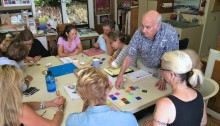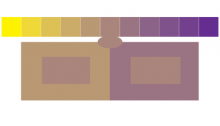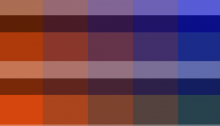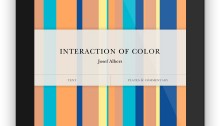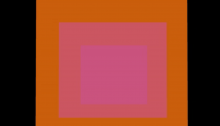Color Relationships 1, Spring 2016 week 2
The second session of the Color Relationships class for Spring 2016 was held on Wednesday, April 13. We shared the insights and challenges produced by the homework, discussed important questions to ask when determining the ‘ingredients’ of a color, and had a thorough critique of the first assignment. See the full post for additional handouts and videos, and the two new homework assignments for this week.

